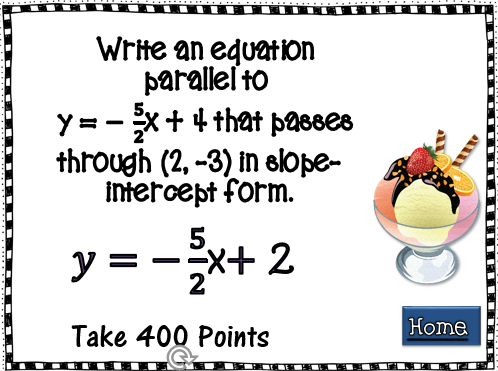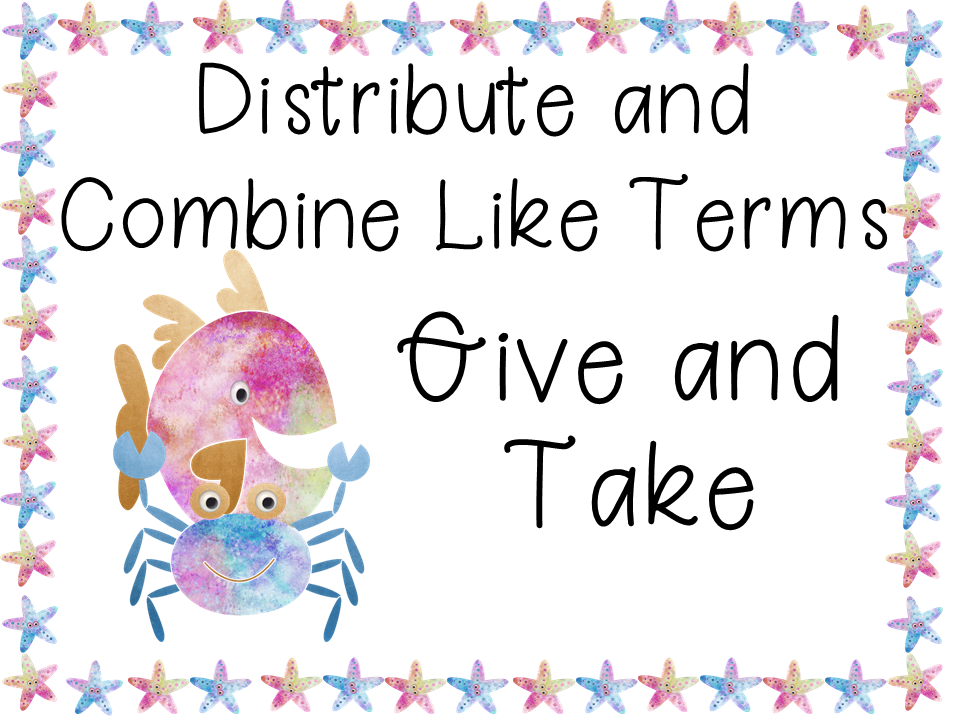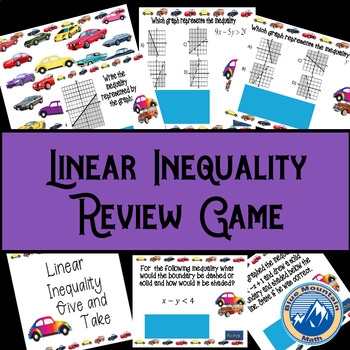Friday is usually game day in the classroom. This doesn’t mean that students just sit and play games without doing math. This means that we have some review of skill activity that seems like a game. when I first started teacher I learned the power of games.

Students were playing an online game (similar to who wants to be a millionaire) that I created about Christmas Song Trivia. This was the middle of December before finals week. One of the questions asked what Grandma was going to get when she got run over by the reindeer. It is an obscure song (especially for a younger generation) so I knew that they would have a problem getting it right.
Persistence and Memory
So when students got to that question and failed, they played it again, and again until they got the right answer. What was unexpected was that 6 weeks later (at the end of January), I remembered to ask students in class if anyone knew what Grandma was going to get. They answered in unison (medicine).
They played until they got the answer which I expected, but they remembered, which was a surprise. This is the power of using games to teach, practice and review math skills.
Problems with Team Games
Over the years students often ask to play Jeopardy. It’s a great game, I like it. Students like it, and enjoy playing. But what happens is that some students are “left out”. Students who struggle can not win. It is a game of knowing all the answers, and most of us do not know all the answers, so not everyone is engaged.
Give and Take
So I took the format to the next level and injected some strategy to the game. I call this game, “Give and Take” because teams do not keep the points they earn for answering questions right. They either give them to another team or take them away.
Teams form alliances and try to use alliances to form a winning strategy. Sometimes it works, until I remind the class that only one team can be the winner–more about winners later.
Give and Take is a PowerPoint game that is projected onto a screen or whiteboard. It is played whole class.
How to Play
You can either form the teams or allow students to form their own. In this game, it will not matter if all the struggling students are on the same team. It also will not matter if all your A students are on the same team.
Use Whiteboards
I give one white board to each time to show the work and record their joint answer. The white board is rotated each question so every student has the opportunity to record the group work/answers and hold it up. Students are also expected to do their work on paper to turn in.

Step 1: A sample game board is shown above. The first team chooses an icon/image and the question is displayed.

Step 2: All the teams work on the question. I monitor their progress and when time is up, I count down 3-2-1, Up, and the boards are displayed.
Step 3: I project the answers, points and if they are to give/take.

Step 4: Students confer and correct teams decide which team will either receive their points or which team they will take points from.
Step 5: About every 3-4 questions I post the team standings so every team knows who is in the lead.
Step 6: When time is up or the questions have all be answered, the winner is declared.
Seems complicated, but is actually easy, look at a video of the game below.
Tips:
I monitor student work as the game is played for misconceptions that I can address in the moment. If I notice that several students are confused, after I reveal the answer, I pause the game and do some quick reteaching.
I collect all the work as points for playing the game. This is counted as an assignment. I look at it to see if the students improved while playing. I note any further misconceptions with a play to use similar problems as a warm up or exit ticket the next day.
The game typically takes a whole class period even if all the questions are not answered. However, you can play fewer questions, note which ones were used and finish another day. You can also start the class with a question which serves as a warm up.
Game Points
What are the points for? Game points are used to determine who wins. What do they win? I always have a variety of things that kids can get just for playing along: jolly ranchers, mini candy bars, Hershey kisses. Not gum. Or sometimes, the victory is enough. But whether it is middle school or high school, they are still kids and like a prize.
Winners
If you do not want to award a prize, then give the winning team some advantage. Give them a free homework pass, give them the option to switch seats with someone (for a certain time period). Offer some other privilege that your students would want. Mine want candy, lol.
If you would like to try this game for yourself, here is a freebie for readers.

After you try it, check out the other games available. Here is the current variety of games I have available and am always working on more. Give and Take Games
This is the perfect activity to have on hand when other plans aren’t working. Sometimes the internet will go out for that great online activity you planned and a PowerPoint game is always an inspired choice.
Give and Take is the ultimate low-prep but engaging activity that students enjoy and offers important practice. If you have one you would like to see, please send me an email at [email protected].











Leave a Reply